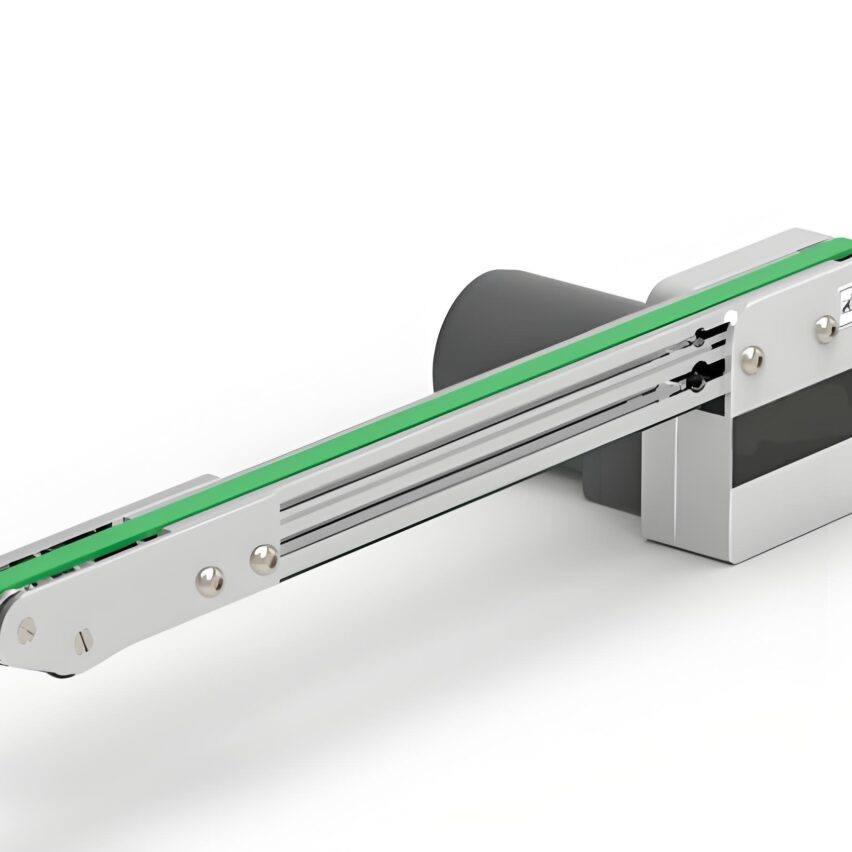How many parts do you have to move to build a car? Tens of thousands! If you rely on manual labour, you'll be exhausted in the whole workshop. Today, let's talk about those parts in the car factory."The Invisible Mover"-How to choose the type of parts conveying line. Don't be intimidated by the technical terms, to put it bluntly.What parts go on what conveyor?Choose the right to save time and money, choose the wrong? Hey, wait for three days to repair the equipment!
I. Accumulation chain: survival of the old players
"It can store and walk, but it's loud and uses electricity."
It's like a "motorway" in a factory, where the chain drags the carrier trolley and the parts can be threaded.Save it for later.(The term is "accumulation"). For example, the PBS body storage line, where welded frames are lined up for painting, is cushioned.
vantage: Technological maturity.low cost(low initial investment), and the repairmen know how to fix it.
drawbacks: it's as noisy as a tractor.Electricity bills are going up.It runs slow and takes up space.
Applicable Scenarios::
- Chassis lines for Japanese and Korean cars (e.g. Hyundai, Kia)
- Cost-sensitive low-volume production lines
Note to newcomers: If the workshop is quiet and environmentally friendly, or if electricity is too expensive, this old chap may not be the best choice.
II. Friction lines: "all-rounder" for middle-class families
"Quiet and flexible, just a bit of a pain in the wallet"
Push the dolly along on friction wheels, like a supermarket trolley stuck on a conveyor belt.Interior lines, chassis linesUse it most, such as the door interior assembly, workers follow the car as they go, the car speed can also be adjusted at any time.
vantage:.low noise(library level) and easy maintenance.oil free(Clean workshop) and a small hill to climb.
drawbacks:.Expensive when you buyOne set of drivers is worth two sets of other people's money.
Applicable Scenarios::
- European and American car chassis lines (Volkswagen, BMW love it)
- New energy vehicle battery pack installation station (precise parking required)
The White Mantra: Budget enough + looking for quality? Close your eyes and punch the friction line! Don't save that little bit of money, it will hurt more to fix it later.
Third, the skateboard line: high-end players of the "Transformers"
"It can be raised and lowered, a divine man-car operation."
Workers stand directly on skateboards to do their work, and the height of the vehicleliftable! For example, lower it to save effort when fitting the dashboard and raise it to avoid bending when fitting the chassis.
vantage:.Full marks for man-machine collaborationLess faults.Flexible lifting and lowering(Worker lumbar friendly).
drawbacks:.extremely expensive, and also have to specialise in closed tracks.
Applicable Scenarios::
- Interior lines of high-end brands (Mercedes-Benz, Tesla's "show-off zone")
- Mixed line production (large height difference between cars/SUVs, lift adjustment is key)
Teacher Spit: This stuff is good, but don't get greedy! Just use a regular skateboard for the final line, it's more cost effective to leave the lift function to the interior line.
Comparison table of the three types of hardcore
| comparison term | cumulative chain | friction line | skateboarding line |
|---|---|---|---|
| Initial cost | Low (💰💰💰) | Upper Middle School (💰💰💰💰) | High (💰💰💰💰) |
| noise level | Large (🔊🔊🔊) | Small (🔊) | Small (🔊) |
| maintenance difficulty | simpler | moderate | moderate |
| typical user | Japanese and Korean car companies | Europe/USA/New Energy Vehicle Enterprises | High-end/mixed-line car companies |
| Best Partner Workstation | Body storage (PBS) | Chassis assembly | Interior assembly |
A personal view: the future is hidden in two details
- "Rotatable spreaders" are quietly gaining popularity::
Chassis lines like those of BAE's new energy sources, withRotating spreader + AGV trolleyResting on the battery pack, workers don't have to crook their necks to screw in the screws. This detail shows.Ergonomics over speed. - Maglev is not a science fiction film.::
Wuxi Minhang such companies have been testing the waters of magnetic levitation transport.Zero contact, zero noiseIt's expensive, but it's good for precision parts. Don't be so quick to dismiss it, but think of the days when electric cars were laughed at as "toy cars"!
One last rant.Don't follow the crowd in your selection!The Japanese use cumulative chains and the Germans love friction lines, essentiallyBalancing cost and qualityThe first thing we need to do is to make sure that we have the right people in the right place. Our domestic car to bend the road to overtake, not as good as in the "worker comfort" on more money - after all, talent is the most expensive parts ah!
(Note: The technical parameters and cases in the text are synthesised from the Automotive Manufacturing Industry Report, with data up to the latest practice in 2025)













